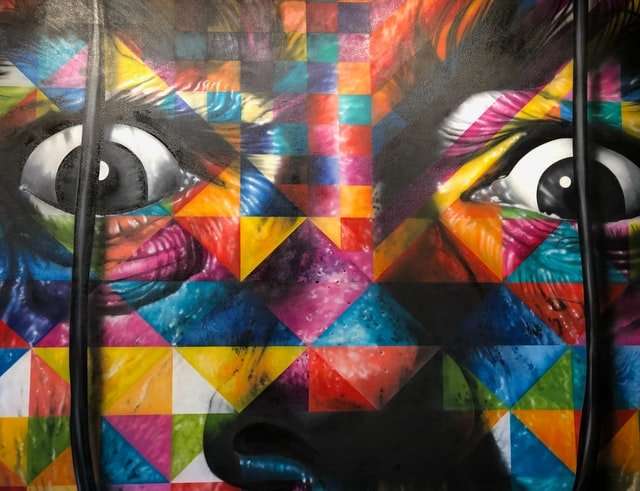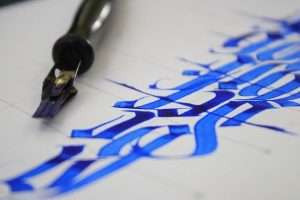Rococo style is often considered as delicate and feminine. This article will explain how you can use Rococo in your home, without having to sacrifice your masculinity. Rococo has many favourable aspects that make it a suitable style for men’s homes.
Tastes change, and the world of interior design is no exception to this. In earlier times, for example, men didn’t mind if their walls were covered in beautiful paintings or classical marble statues. But with time all these paintings and statues disappeared from the interiors, leaving only the bare walls behind. Men preferred the look of those empty walls over decorative paintings and sculptures.
What happened? Well, we could say that men just got tired of living in such a decorated environment. Many of them wanted something less feminine for their house. They started to prefer the clean look of bare walls over the flamboyance of decorated surfaces. However, it seems that something else was happening at the same time: there was a new aesthetic movement which advocated minimalism over decoration.
This movement was called “The Age of Reason”, which saw art as a source of inspiration rather than a work of art in itself. The lack of decoration was meant to make people think about what they were looking at, rather than just enjoying
Rococo art is all about fun, luxury, and glamour. There is nothing conservative or dull about this type of art. It is pointy, shiny, colorful and luxurious. The artisans were masters of their craft. They wanted to outdo each other every time they developed a new masterpiece.
The most popular place for rococo art was France during the 18th century. But this kind of art has been around for a very long time. During the Renaissance period (14th-17th century), many artists embraced Rococo style as well. It was only in the 18th century when it became dominant and it spread all over Europe.
These past centuries, the Rococo style evolved into different sub-styles and become popular in numerous homes across Europe and America. But today, you can bring that old world charm into your home with a contemporary twist.
There are many styles of art, architecture, and design often referred to as Rococo. Rococo art is an art style that emerged in the late Baroque era from the mid-1700s through the mid-1770s. It is a period marked by extravagance and general abundance, which in some cases seemed to be a form of commentary on cultural excesses. However, rococo art is not necessarily extravagant or even excessive; it can be quite graceful and witty.
Rococo art is characterized by intricate designs, light-hearted imagery, and fanciful flourishes that are often described as “extravagant” or “overly elaborate.” If you’re looking for ways to incorporate rococo into your home decor, one might say that this style is perfect for those who want to add bold colors and playful patterns to their interior design. In fact, it’s the main reason why rococo has been so popular over time.
Rococo was at first rejected because of its frivolity but its popularity quickly won over critics. These days rococo is considered a significant style of art that influenced many later artists such as Gustav Klimt and Art Nouveau artists such as Alphonse Mucha.
Rococo art is a style of art that was popular in the 18th century. Rococo art is a form of art that was defined by how it looked and felt. What makes Rococo art so unique is its use of color, imagery, and other design elements.
TIP! If you are looking for something to help decorate your home, then consider incorporating some Rococo art deco into your home decorating scheme. The beauty of Rococo art is that it can fit into almost any environment, from modern to rustic. Rococo art is often seen as a symbol of decadence, but it can also be used to create an elegant and sophisticated look with your home decor.
Rococo artists were concerned with nature and the complexity found within life. They created very detailed paintings with their signature curves that added to the beauty of what they were painting. You will notice in some Rococo pieces that there is a lot going on which can make them seem busy or confusing at first glance.
Name:The House of Dreams
Rococo is a visual art and design style, which was popular during the 18th century. It is named after the French word ‘rocaille’, which means shell-like or ornamental rocks. Rococo is known for its frivolous and even sensual style. It is characterized by asymmetry, bright colors, pastel colors and lightness of form. The art of Rococo was often used in home decorations, especially in France and Austria, but also in Italy and Germany.
Tastes changed towards Neoclassicism at the end of the 18th century. Neoclassicism became popular because it was a more serious style than Rococo and less frivolous than Baroque art. Still, Rococo as an artistic movement had already come to an end by then. But it still lives on to this day as a decorative art style.
The term Rococo has now become a kind of general term for any light and playful decoration for home interiors. In the 19th century, it was mostly used for precious objects made of porcelain or other delicate materials like ivory or lacquer work that were decorated with gold or silver leaf.
Rococo art is a beautiful style of art that has many elements of decoration. Rococo was also very diverse in its themes. Exaggerated curves, scrolls and lace create a sense of luxury. The Rococo period occurred during the 18th Century throughout Europe and America. Rococo art can be found in all types of media including painting, pottery, porcelain, interior design and sculpture.
Taste for the ornate, the extravagant and the luxurious succeeded the more soberly furnished styles which had been popular for centuries but at the same time it was open to new ideas and influences from abroad. This period of European history recognised no strict definition of style or taste. It was filled with a mixture of various styles which included Baroque and Neoclassical as well as Rococo.
Rococo is an 18th century style that emerged in France around 1730 but quickly spread throughout Europe until about 1770 . Some say it replaced the Baroque style while others say it was a natural progression from Baroque into early classicism. The main features are asymmetry, lightness, extreme elegance, playfulness and abundance of detail often combined with architectural forms such as columns and pilasters.
Rococo art is usually synonymous with
Rococo art is a form of art that flourished in Europe from the late 1720s through the 1760s. Rococo was an attempt to get away from the strictures of the Baroque, with its formal designs and ordered symmetry. It was more graceful, curved and delicate than its predecessor. The style was named after the French word rocaille, which means “rockwork” or ornamental stone carving. Rococo artists were known for their playful use of curves.
The centerpiece of the Rococo style was the use of asymmetry, whether in a work’s overall design or in its emphasis on light, color and movement.
Some art historians classify Baroque as a transition between the Renaissance and Neoclassicism periods, while others regard it as a period in itself because so much about it was unique to itself. The Baroque period was one of drama and sweeping grandeur. The formal elegance of the previous Renaissance style gave way to a dynamic, swirling energy that emphasized movement, emotion and human drama.
Rococo artists were known for their love of ornamentation — they painted scenes with intricate details and added decorative borders around their pictures. They also loved to paint pastoral scenes like landscapes, flowers, animals and people engaged


